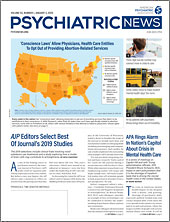Though physicians have long expressed frustration with electronic health records (EHRs), quantifying their feelings about the usability of the technology has been difficult.
Making use of data from a nationwide physician survey, researchers calculated just how challenging physicians find EHRS: They gave current EHR systems a big, fat F on usability, according to a report published in Mayo Clinic Proceedings.
This low grade is more than just a mark of shame. Previous studies suggest that poor usability may increase the risk of physician burnout.
“This study provides a straightforward measure that quantifies the gap [in usability] between EHRs and other products,” said lead study author Edward Melnick, M.D., an assistant professor of emergency medicine at Yale University. “Hopefully, this sets the stage for a discussion on how to close that gap,” he continued.
Melnick and his colleagues analyzed data from a nationwide survey of physicians related to burnout. A random subset of survey participants also received an accompanying 10-item survey related to EHR usability. This EHR survey was based off the System Usability Scale (SUS)—a simple and reliable measure that grades technology usability on a scale of 0 to 100. The analysis was based on the responses of 870 physicians across specialties who responded to all 10 SUS items.
The average usability score for EHRs was 46, with 84% of all respondents giving a rating less than 68 (which the study noted is the tech industry average). That score places EHRs in the bottom 10% of technologies that have a SUS rating and is considered “not acceptable” under the SUS scoring system. For comparison, the Google search engine has a rating of 93, GPS navigation devices have a 71, and Microsoft Excel has a 57.
Physicians of different specialties tended to vary in how they rated the usability of EHRs: General and orthopedic surgeons reported lower usability scores on average (both in the 30s), while anesthesiologists and pediatricians reported slightly higher scores (in the 50s). Psychiatrists gave EHRs an average usability score of 46. Physicians at academic centers reported slightly lower EHR usability scores (average of 43) than those at veterans health centers (average 57).
There was a strong correlation between respondents’ SUS ratings and their perceived level of burnout, which was measured with the Maslach Burnout Inventory. Physicians who reported lower scores were more likely to have burnout symptoms, including emotional exhaustion or depersonalization. This correlation held true even after factoring in medical specialty, practice setting, total hours worked, and number of nights on call.
“As with any cross-sectional analysis, correlation does not equal causation,” said Mary Vance, M.D., M.Sc., a vice chair of APA’s Committee on Well-Being and Burnout. “Although this study supports an association between EHRs and burnout, we can’t necessarily interpret the results to say EHRs cause burnout.”
Another caveat noted by the study authors is that survey respondents in some cases might be conflating EHR frustrations with administrative burdens. “For example, one hospital may require password revalidation more frequently than another hospital,” Vance explained. “That could be interpreted as an EHR issue, when it is actually a regulatory issue.”
How to Enhance EHR Usability
With the failing usability grade now out there, the question shifts toward how EHRs can be improved, Melnick said.
“These systems are not going to change overnight, but I think there are several avenues through which electronic records can be improved,” Melnick said. He said that the initial push to expand EHRs nationally following the 2009 Health Information Technology for Economic and Clinical Health Act incentivized speed of adoption of EHRs rather than usability or operability of the technology, which helped contribute to a poor user experience. Today, vendors have more flexibility to focus on the interface, he said.
Additionally, recent changes to data standards allowing for greater development of third-party mobile applications that interface with EHRs “could help disrupt the industry and simplify how physicians communicate with each other or their patients,” he said. Melnick suggested voice recognition technology may also help to improve EHR usability, similar to how smart devices are enabling consumers to operate home electronics with voice commands.
At the end of the day, however, do not expect EHRs to compete with Google, said John Luo, M.D., the director of Consultation Liaison & Emergency Psychiatry at the University of California, Irvine School of Medicine and an expert in health informatics. “The reality is that an EHR is a complex system built for multiple end users that entails life and death consequences,” he told Psychiatric News. Companies like Google can afford to prioritize the user experience since “no one dies from a search engine result.”
Physicians will have to shoulder a lot of the burden in dealing with EHR frustrations, Luo continued, though that burden can be eased with better training. “Oftentimes, we just provide minimal training to new staff because we don’t want our health care providers to feel overwhelmed, but it’s worth spending more time upfront so everyone feels comfortable using these tools.” Luo added that health systems should invest in a strong support team that can provide quick technical assistance if needed.
Melnick agreed there is probably a limit to the SUS score an EHR can attain, but even raising the average score a few points could be significant; this analysis suggested every additional point of usability was associated with a 3% reduced risk of physician burnout.
Melnick’s study was supported by the Stanford Medicine WellMD Center, the Mayo Clinic Department of Medicine Program on Physician Well-being, and the AMA. ■
“The Association Between Perceived Electronic Health Record Usability and Professional Burnout Among U.S. Physicians” is posted
here.

